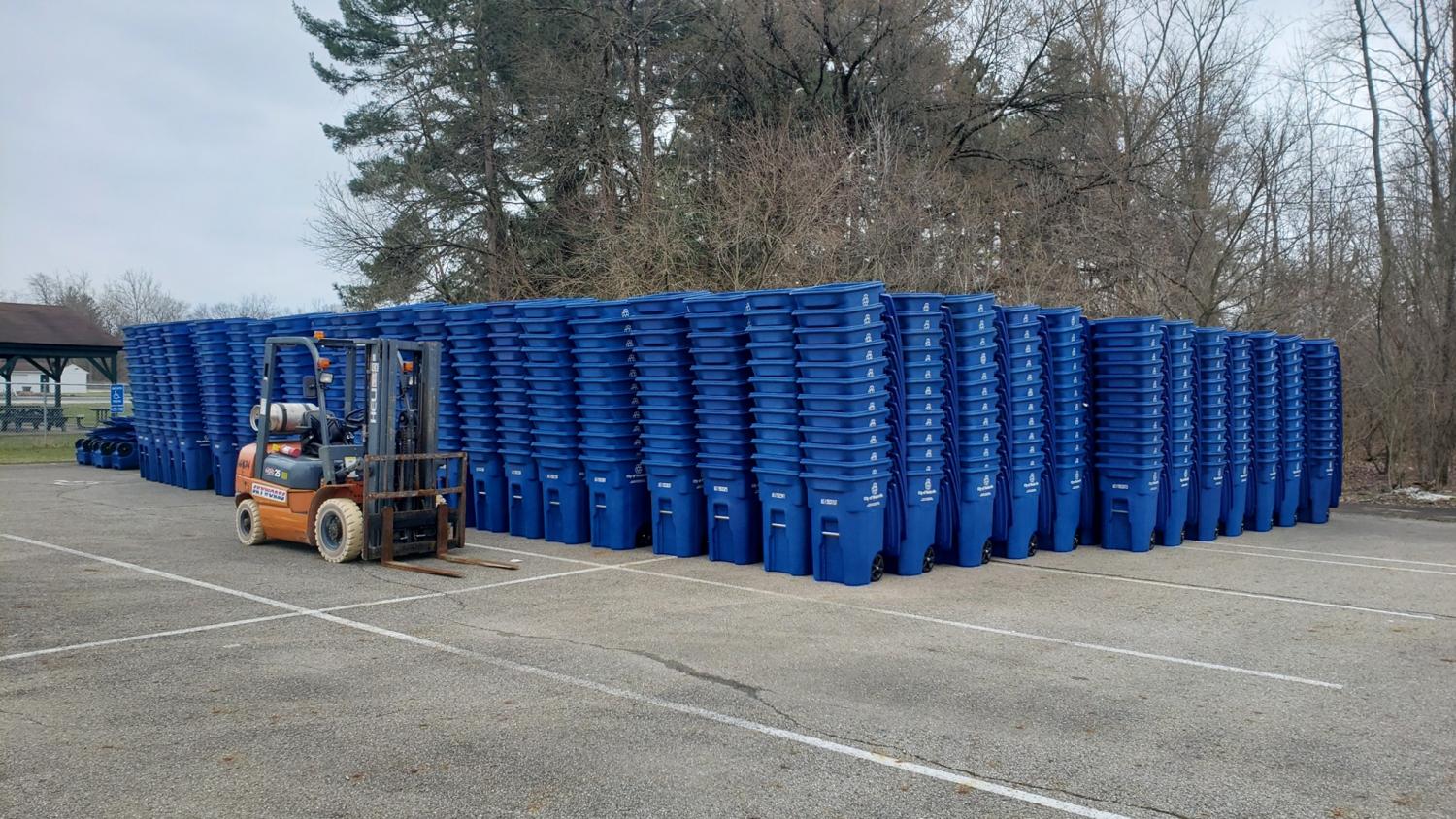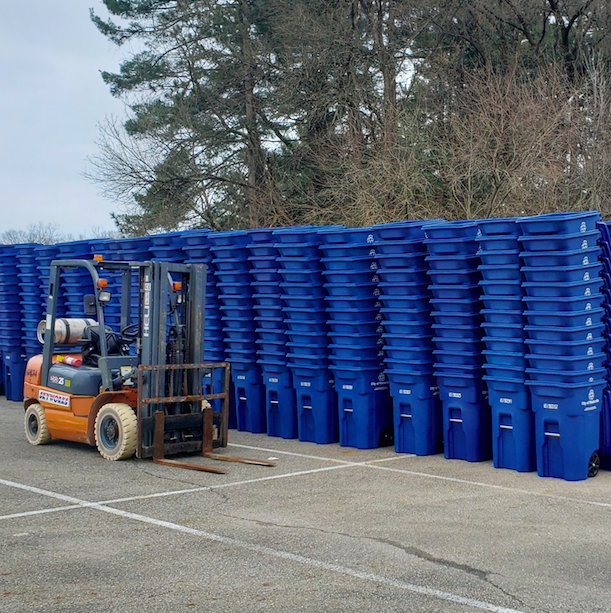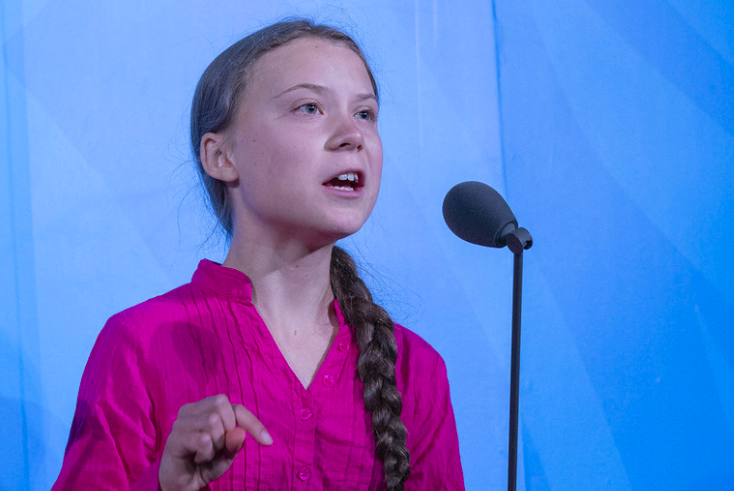The Link Between Solar, Wind Power and Groundwater Sustainability


A recent study, led by Princeton University and published last week in Nature Communications, is one of the first of its kind to show that increased use of solar and wind energy can aid groundwater sustainability, an important aim for both taking on droughts as well as boosting sustainable agriculture. While the researchers used California as a case study, the findings could also apply to states like Texas and other countries that are trying to balance groundwater depletion, drought and agricultural output.
Known as the energy-water nexus, the link refers to the water embedded in energy and the energy embedded in water. Consider the amount of water it takes to produce and distribute electricity. As well, consider the amount of electricity used to treat, pump and distribute water. And while solar PV and wind energy resources are virtually water-free, traditional sources of energy—such as coal, nuclear and natural gas—require a significant amount of water to generate power. Depending on the fuel mix for electricity and the level of water stress, the tradeoff could be significant. From California to Texas, recent droughts and declining groundwater levels require more pumping to provide irrigation water for crops.
Agriculture combined with population growth during droughts means groundwater is being depleted at alarming rates. As regions experience more frequent droughts, it requires more energy to pump more water out of the ground as the levels drop. It can take a long time to replenish groundwater, and though it seems intuitive that heavy rains could take care of it, the rain has to fall in the right spot to make a difference. The scenario gets complicated quickly.
Strategic placement of renewable energy could get the biggest water-savings bang for one’s buck. In 2016, I led a study at Environmental Defense Fund (EDG), in collaboration with the Texas Army National Guard, which mapped water stress and the potential for solar, wind and geothermal energy at 60 of the National Guard’s Texas facilities. By overlaying the water data with renewable energy, the lowest-hanging fruit become clear. For example, Fort Bliss Readiness Center in El Paso has both the highest solar potential and the most extreme category of future water stress. Therefore, Fort Bliss is an ideal candidate for protecting water supplies by installing solar panels.
The Princeton-led study’s findings show a clear link between deploying more solar and wind energy and more sustainable groundwater supplies. When looking at long-range forecasting, energy and water planners should look at both resources. California is better placed than some due to its statewide cap-and-trade program that includes a Water-Energy Team of the Climate Action Team to better coordinate carbon reductions from the water sector, whose emissions largely come from the energy used by the sector. Further, the California Energy Commission found that as much energy could be saved through water conservation as through the investor-owned electric utility efficiency programs, but at half the cost. There is a lot of potential to reduce emissions and water demand when the two sectors are looked at more comprehensively.
Energy and water are inextricably linked, so it makes sense that increasing the use of low-water energy resources will decrease the demand on water. The next step is critical. We have the data, now it is up to policymakers in states, regions and countries to consider water impacts when making energy choices and energy impacts when addressing water supply issues. In many places, the two sectors are siloed, within both budgets and policy. Concerted effort could be taken to break down those silos to preserve the water we need for our people and our food.
Image credit: National Park Service
How Walgreens Has Stepped It Up and Hired More Veterans


Last year, Walgreens added itself to the growing list of employers actively recruiting military veterans – and for good reason. Veterans come into the civilian labor market with an impressive set of work skills that can translate into store aisles and on to top management positions.
Walgreens launches the HERO Program
Walgreens launched the Helping Veterans with Educational and Retail Opportunities (HERO) Program on Nov. 8, 2018, with the aim of adding 5,000 military veterans to its workforce of approximately 230,000 over the next five years.
Those relatively modest increments could have an outsized impact on employee culture at the company.
The aim is not simply to bring more veterans on board. Walgreens plans to hire veterans directly into junior leadership roles, as shift supervisors or assistant managers, as a first step toward becoming a store manager.
A look at veterans’ workplace skills underscores why Walgreens is targeting veterans for hiring.
As described by the U.S. Veterans Administration (VA), military training goes far beyond the ability to stick to a schedule, follow rules and perform assigned tasks. Veterans also become accomplished in teamwork, responsibility, accountability, confidence, organization, discipline and the ability to handle difficult situations, adapt to new circumstances and solve problems.
Today’s military veteran has also worked extensively with computers and other new technology.
Making the pitch
Walgreens recognizes it has to compete with other employers to attract top workers who previously served in the military.
In pitching the HERO program last year, Walgreens noted that store managers have the potential to move into field or corporate leadership positions.
The company also stated that veterans can contribute to the company’s mission of championing the “health and well-being of every community in America.”
That could easily include a veteran’s own community. According to Walgreens, about 75 percent of the U.S. population lives within five miles of one of its thousands of locations. That provides prospective hires with a chance to work where they live rather than relocating.
Adding punch to the program
Walgreens also knows the offer to move up the corporate ladder is a hollow one unless it includes the kind of educational opportunities that qualify workers for senior management positions.
To that end, Walgreens launched HERO as part of a five-year partnership with Southern New Hampshire University, a school that already has a long history of education programming tailored for veterans.
The new partnership will assist Walgreens employees who are veterans in obtaining a bachelor’s or master’s degree from the school, with tuition discounts added to any other financial assistance they may have.
In addition, Walgreens will train its new hires in store management skills. This includes customer relations, managing teams of more than 20 employees and overseeing sales and merchandise.
Walgreens is stepping up to the plate for veterans
If that sounds challenging, it’s because it is.
Managers also tend to the operation of in-store health clinics and other health services at a growing number of Walgreens locations. They must be alert and responsive to the company’s business model as it evolves in the hotly competitive retail health-care environment.
That’s the kind of challenge that attracted Arin K., a veteran who is currently in the HERO Program.
“I was intrigued by a company the size of Walgreens making a commitment to hire veterans into a position where the opportunities are endless,” she wrote in an email interview with TriplePundit. “I decided to apply because I was new to the area and wanted to find something where I could utilize my leadership talent and try something new.”
In addition to the skills cited by the VA, Arin listed trust, integrity, attention to detail and superior planning and execution skills as intangibles instilled in veterans from their military training. Being able to utilize these, she said, contributes to her appreciation for the work environment at Walgreens.
“My coworkers are the most unique and amazing team that I have had the honor to work with since serving in the military,” she explained. “My store manager allows me to work independently and trusts me to make sure tasks are completed to expectation.”
That’s quite a compliment from someone who served as an air defense artillery captain at several domestic bases and spent time working on the PATRIOT missile system across Kuwait.
Last June, the VA sent a bulletin to its subscriber list to help publicize the HERO Program through an online lunch-and-learn session.
Walgreens is ramping up its efforts to recruit more like Arin – before someone else does.
Image credit: U.S. Air Force/Flickr
The Glass Isn’t Half Empty: Reasons To Be Optimistic About Water Issues


The news about climate change’s impacts on water supply and availability is often dire and can feel overwhelming.
A recent study led by the U.S. Forest Service found that by 2071 nearly half of the 204 water basins in the U.S. may not be able to meet their monthly water demands. Data from the World Resources Institute’s Aqueduct tool, which maps water stress globally, has found that 17 countries, containing a quarter of the world’s population, face “extremely high” levels of baseline water stress, and several other countries, including the U.S., have pockets of extreme water stress.
Every day, it seems as if a new story emerges about crippling water shortages, from Chennai, India, to Cape Town, South Africa, from Mexico City to Los Angeles.
Solving the water scarcity problem, especially as the impacts from climate change mount, can feel like a Herculean task. Water evokes a visceral reaction from people. We drink it, bathe in it, swim in it, watch our children play in it. It courses through our cities, and our bodies, we plan vacations around it. Despite our close connection to water, most people do not know how it gets to our taps or what is involved in that process.
Water is a localized commodity, and the sector is highly fragmented. In the U.S. alone there are about 152,000 water systems, creating a tangled web of regulations and interests. Policymakers in the European Union, where water resources vary greatly from region to region, have yet to fully integrate their water management plans. And regions with a history of cross-border disputes, such as South Asia, often treat water data as classified national security information—creating clear roadblocks to effective management of shared resources.
It all sounds like a recipe for water disaster. But there is no need to give up hope. In fact, there is reason to feel optimistic.
The solutions to water supply scarcity are not technical or hydrological. There are an abundance of solutions already available on the market, and companies and governments are undertaking research and development to advance technology further.
Some of the most effective technologies being deployed are in water reuse. Water reuse, sometimes called reclaimed or recycled water, is a proven technology, but has seen increased innovation in recent years.
Desalination, both groundwater and ocean, is another technology that has seen a surge in interest recently. Desalination faces some barriers due to upfront costs, high energy costs and waste issues, but innovations are improving on that front as well.
Other technical issues that are imminently solvable include irrigation and rainwater runoff—the latter of increasing concern with recent flooding in areas around the world.

(Image: Taken in the midst of Cape Town's "Day Zero" crisis in February 2018, this image shows a small puddle of water—over a mile from the edge of the dam—in what was once a city reservoir.)
So, if technology is not an issue, what is? The solutions to water scarcity are political and ethical, but the sands are shifting in the right direction. Momentum is building around the U.S. Environmental Protection Agency’s Water Reuse Action Plan, of which a draft for comment was released in September. The plan aims to better integrate federal policy and leverage business expertise and state and local government to identify, and ultimately implement, action on water reuse.
In Singapore, recycled water even has a brand name. The island city-state has used recycled water for non-potable industrial purposes since 1966, and in 2003, it introduced NEWater—a high-quality, drinkable water recycled from treated sewage. Any initial “ick” factor that came along with the announcement has since faded, as five NEWater recycling facilities powered by membrane separation now provide 40 percent of all drinking water needs—a figure set to top 55 percent by 2060.
There is increasing awareness about the need to value water correctly. This is a tricky policy issue to tackle since it involves an essential good for public health and safety. No one wants to be the one who overprices water and makes it unaffordable for lower-income communities. But policies can help shift the value of water to where it should more appropriately sit while safeguarding access to clean water and ensuring everyone is able to afford it.
In the U.S., for example, inefficient water subsidies, such as for large-scale irrigation and groundwater pumping, could be phased out. Much like efforts to phase out wasteful fuel and energy subsidies, eliminating these in the water sector could help realign demand and supply.
Similarly, the European Union’s Water Framework Directive operates under the premise that "water is not a commercial product like any other but, rather, a heritage which must be protected, defended and treated as such.” In pursuit of this aspiration, the EU regularly analyzes water availability and management policies in its member countries in an attempt to streamline water governance.
When thinking about the global impacts of water scarcity, a reimagining of diplomacy is in order. Currently, policymakers look at the global community in reference to water to evaluate the risk of shared-basin conflicts in countries. But the real threat is that water stress will destabilize local and national governments, as seen in places like Yemen. Thinking about water from a global standpoint means integrating knowledge from development and intelligence agencies into foreign policy discussions.
Companies with global reach—working in a multitude of countries with varying needs—have built an expertise and innovative nimbleness to help governments and industries figure out how to address water scarcity issues.
According to Kimberly Kupiecki, global leader for sustainability, advocacy and communications at DuPont Water Solutions, “businesses can bring together technologies sequenced in the right way” in a city or system, building on other work they have done previously. Companies have the ability to move quickly and can act as advisors in prioritizing which policies and technologies their clients should first invest in.
Kupiecki and her team also note that while science and technology breakthroughs are global, implementation is local, so solutions can be tailored, depending on what a particular market needs.
In Suez, Egypt, where rainfall is often minimal, DuPont Water Solutions collaborated with local partners to design a containerized Ultrafiltration plant—which can be set up in only three months to address intermittent water stress, compared to 12 months for traditional designs. In Kenya, where more than half of all groundwater contains dangerously high levels of fluoride, the company and USAID deployed an onsite water defluoridization unit at a school and hospital near Nairobi. The company even provides water in the least hospitable place on Earth—Antarctica—using reverse osmosis to purify seawater for scientific research stations.

(Image: Cape Town plans to lean more heavily on desalination to cope with intermittent water stress. Here, an intake pipeline is under construction in Gordon's Bay Harbor, about 35 miles south of the city center.)
Because water solutions must, by their nature, be local, culture plays an important role. Israel has, in effect, solved its water woes. Its water sector is centralized, and water is priority in national policy. That decision has made accessing (and developing) the necessary technologies easier, such as desalination, reuse, leak detection and drip irrigation.
But a straightforward federal system is more challenging in other parts of the world. In India, for example, experts say crises such as Chennai’s Day Zero are not a matter of water availability, but rather of water management. As urban sprawl puts stress on reservoirs, residents are increasingly forced to deplete groundwater reserves, purchase water from trucks run by private companies or draw water from sources growing increasingly polluted due to lack of management. Here, concerted efforts to recover rainwater, implement water reuse systems and improve overall efficiency hold the greatest promise.
Still, realigning behavior and culture to understand and address the needs of a community can absolutely be done in cities worldwide. City officials may know what makes their citizens tick, and businesses may know how to best deploy the most appropriate technologies to meet their needs. Private-private efforts can also be critical to helping cities meet demand. For example, Kupiecki of DuPont Water Solutions notes that more than half of their work is with industrial clients, especially in water-stressed areas around the world. If industry can reduce its water demands, then more water can be made available for other needs.
The daily feed of news stories may seem like water is an unsolvable problem, but there is no need to give up hope. In fact, there is reason to feel optimistic. Working in partnerships across government, the private sector (including industry and agriculture) and civil society can solve water scarcity.
The technology is already here. The question is: Will the relevant stakeholders—from large municipal water users and multinational companies down to local governments—come together to deploy it? And more importantly, will we start to recognize water for what it truly is: a public asset, made available to everyone?
This article series is sponsored by DuPont Water Solutions and produced by the TriplePundit editorial team.
Image credits: Unsplash/Abigail Keenan, Flickr/6000.co.za, Flickr/HelenSTB
Saying “Thank You” Through Action. How We Provide Veterans The Post-Military Careers They Deserve


By Troy Vandenberg
Many military veterans find themselves in uncharted territory once they begin to transition out of service. A 2012 study conducted by Prudential Financial, Inc., revealed that nearly half of post-9/11 veterans say they are unprepared for the move to the civilian workforce, citing the greatest challenge as finding a job. They often struggle for long periods of time to find a new career path—sometimes going back to school to earn a traditional or vocational degree.
There are an estimated 200,000 service members exiting the U.S. military annually, and post-career service placement has become a critical issue for each of them. Many companies are eager to hire veterans due to the many benefits their military service brings to a business environment, but often find it challenging to transition an individual’s unique military skill set into an applicable position within the company.
As a Navy veteran, I understand these challenges. In my role today as a civilian and military talent acquisition manager, I’ve witnessed many servicemen and women achieve successful post-military careers at Smithfield and in various industries. This is not by chance, but by intentional design.
Veterans are a valuable asset to any workforce with their strong work ethic, leadership skills, sense of purpose, and ability to adapt. I am proud that Smithfield has recognized the increasingly vital role that our over 1,800 veterans play in our workforce and our initiative Operation 4000! which is our company goal to employ 4,000 veterans, 10% of our U.S. workforce, by the end of 2020. Achieving this goal requires robust recruitment efforts and, just as importantly, intentional efforts to retain these veteran new hires.
We’ve created purposeful programs that support service members during their transition into civilian life and we’ve also created programs to keep them engaged once they begin their career at Smithfield.
I’ve been involved in a variety of military recruitment and development efforts, but what’s most important is that we encourage other companies to do the same for our nation’s veterans.
I want to share some insight into the programs and initiatives that we’ve developed where our veterans have truly succeeded in finding their place after military service:
Smithfield Salutes
This is our veteran employee business resource group at Smithfield that supports military personnel as they transition out of active service. This group is made up of both veterans and other Smithfield employees who are actively involved in supporting our military. This group aids and embraces incoming military service members as they transition into careers at Smithfield and is a continuous resource throughout an employee’s career at the company. This group also volunteers in numerous capacities, helping support veterans in need across our local communities.
Military Fellowship Program
This program aims to prepare veterans entering the Smithfield workforce for leadership opportunities. The Military Fellowship program offers an 18-month rotational leadership development curriculum for first-rate, recently transitioned military leaders. As the new year approaches, we encourage veteran job seekers to consider this fellowship program that introduces these individuals into a variety of skilled careers at Smithfield.
Military Supervisor-In-Training Program
This 52-week training program also supports leadership development for veterans working at Smithfield. This program is geared toward giving junior military leaders, E-4 and above, operational training to equip them with the skills needed to become an effective leader in manufacturing. Upon completion of this program, individuals are eligible for promotions into full-time production supervisor roles at over 40 locations nationwide.
As a veteran, I’m proud of Smithfield’s long history of supporting veterans and military families through volunteerism, food donations, and philanthropic partnerships. There has been a conscious effort to commit substantial resources toward veteran recruitment, engagement, and career development with the intention to make a difference for veterans in their post-military career—and it’s been successful.
As Veterans Day approaches, I want to challenge employers to say thank you through action and to make an impact where it really counts—supporting those who have served and sacrificed for our freedom, and rewarding our veteran community with fulfilling, lifelong careers.
As a proud veteran employer, we’re always looking to expand our military workforce and encourage individuals that are interested in producing good food in a responsible way to learn more at smithfieldfoods.com/veterans.
This article was previously posted on LinkedIn and in the 3BL Media newsroom.
Image credit: Smithfield Foods
A Driving Passion for Supporting Veterans: Booz Allen and the Salute Military Golf Association


Nearly four out of five (78.2%) veterans live with the symptoms of post-traumatic stress, according to the Annual Warrior Survey by the Wounded Warrior Project.
The Salute Military Golf Association (SMGA) harnesses the power of golf to improve the quality of life for veterans who have been wounded or injured in post 9/11 military operations, including those with Post-Traumatic Stress (PTS) and/or Traumatic Brain Injury (TBI). As a 10-year community partner, Booz Allen has helped the SMGA Wounded Veteran Golf Tournament grow to multiple locations nationwide and raise over $800,000 for SMGA.
A natural partnership
In 2009, two Booz Allen associates invited a speaker from SMGA to a client event on PTS. The two organizations quickly recognized their shared values.
“Booz Allen’s team of nationwide volunteers has gone above and beyond to ensure SMGA can provide our wounded veterans the opportunity to grow stronger through golf,” said Rich Crowe, Booz Allen executive vice president and chairperson of the Washington, D.C., metropolitan tournament. “Across the country, these volunteers exemplify Booz Allen’s commitment to fusing connections in our communities through collective ingenuity and passionate service.”
Furthermore, he added, “Our clients have a vested interest in the well-being of our country’s veterans and many of the projects we work on help to ensure the safety and survivability of future soldiers.”
Organic growth, powered by volunteers
This powerful collaboration soon spread nationwide. Booz Allen now hosts SMGA tournaments in 13 locations, administered entirely through dozens of firm volunteers and one community impact grant.
“In 2018, our team of nationwide volunteers turned a $20,000 Booz Allen community impact grant into a $132,980 contribution to SMGA by hosting 13 events across the country,” said Crowe. “With a 565% return on investment from a single community partnership grant, no other community partnership project compares with the efficiency, performance, or actual rate of return of this annual event.”
Among participants in SMGA events:
- 92% said that SMGA helped improve mobility, range of motion, flexibility, and/or level of pain
- 93% found that participation helped with their PTS
- 93% found that participation helped improve family life or other relationships
Joining forces, paying it forward
The annual tournaments deliver invaluable returns for those involved as well.
“Organizing the SMGA tournament was a great opportunity for me to not only support an amazing cause, but to expand my leadership skills,” said Booz Allen Lead Associate Cheryl Wolfe, a former site lead. “I asked volunteers to champion different aspects of the tournament, and developing that team led to a true group effort.”
Lead Associate K.C. Schuring joined Booz Allen in 2012 after recovering from near-fatal injuries in Iraq and over two dozen surgeries. He has been involved with SMGA’s program since his local office in Troy, Michigan hosted its first tournament.
“I immediately volunteered to assist with this event because of what SMGA had done for me several years before,” he said. “Now I could return the favor.”
Learn more about the SMGA Wounded Veteran Golf Tournament and how Booz Allen supports veterans and military families.
Originally published in the 3BL Media newsroom.
Image credit: Salute Military Golf Association
How State Department STEAM Camps Benefit Both Girls and Employee Volunteers


Teaching girls how to say hello to Harry Potter through code sounds like something Hermione Granger would do at Hogwarts. But it’s part of the curriculum for high school girls from more than 27 countries who participate in WiSci (short for Women in Science) STEAM Camps (STEAM, often referred to as STEM, stands for Science, Technology, Engineering, Arts & Design, Mathematics) each year.
A global public-private partnership boosting STEAM opportunities worldwide
Funded by the U.S. Department of State and run by World Learning, WiSci operates through a public-private partnership with Google, NASA, Intel, Microsoft, the American Society for Microbiology and the United Nations Foundation’s Girl Up. The two-week, all-expense-paid camps provide girls ages 15-18 with a cross-cultural experience where they learn from women in STEAM from participating organizations.
At last week’s 3BL Forum, Jim Thompson, director of private engagement within the Office of Global Partnerships at the U.S. Department of State, shared how the program is helping keep girls focused on science, technology, engineering and mathematics throughout high school and into college.
To date, the program has reached more than 600 girls and young women at camps held in nearly a dozen countries, including the United States, Ethiopia, Namibia, Estonia and Peru. Through hands-on, girl-centered instruction, participants learn to value taking risks, bounce back after failing and build the reliance to keep trying again.
After camp is over, participants are expected to take what they’ve learned back home and share it with their communities through presentations, workshops, science fair activities and in the classroom. According to Girl Up, previous WiSci campers have started science and coding clubs at schools, have remained in contact with mentors they met at camp and have continued working on projects begun at the camp with girls they met from other countries. In addition, of the past campers who are now enrolled in college, 78 percent are studying STEAM subjects.
STEAM Camps offer valuable employee engagement opportunities
According to Thompson, it’s not just the girls who benefit from the camp experience – so do the professionals from sponsoring organizations who volunteer to teach and mentor girls.
“It’s a great way for employees to engage,” said Thompson, addressing 3BL Forum attendees.
A common theme among speakers at the 3BL Forum last week was the growing desire of employees – especially millennials and Gen Zers – to be part of an organization that shares their values and provides them with opportunities to give back. And linking volunteer engagements to an organization’s core mission just makes sense.
Instructors from NASA at WiSci camps, for example, have taught girls JavaScript programing using satellite data visualization tools like the Google Earth Engine. Google employees have highlighted how they use technology to make a difference in people’s lives, including the company’s TalkBack app for vision-impaired Android users and a smart spoon designed for people with hand tremors. They applied the learning by helping girls build their own apps that take accessibility into account. And volunteers from Intel have leveraged experiences from their daily jobs to teach girls about robotics and artificial intelligence (AI).
For the sponsors of WiSci, it’s a win-win-win: They are helping to bridge the technology gender gap, they are creating a pipeline of skilled future workers and they are providing a rich engagement experience for their employees. And that is something that Hermione would definitely raise her wand for.
TechGirls (U.S. Department of State)/Facebook
New Roadmap Seeks $500 Million Investment to Transform Recycling in the U.S.


The Recycling Partnership, a nonprofit that describes itself as a “national force for improving recycling,” has recently released a roadmap and “Bridge to Circularity” report aimed at transforming the United States recycling system and aligning it more with the goals and needs of a fully circular economy.
“Our current recycling system is fundamentally underfunded and incapable of delivering a circular economy without dramatic evolution,” said Keefe Harrison, The Recycling Partnership’s CEO, in a press statement. “With this report, we are providing the clear roadmap to create a new and improved recycling system of the future.”
Recycling is an old technology, but it badly needs more innovation and improvement. The main concern is that the recycling rate in the U.S. has hit a plateau. Back in the 1980s and 1990s, recycling rates saw a rapid uptick, as environmental awareness grew and more and more communities, particularly in urban areas, adopted practices such as curbside recycling. But then, all that progress stalled, and the U.S. recycling rate has been stuck at around 34 percent for the past decade.
The reasons are multifold – from the fact that suburban, exurban and rural areas have been slow to adopt municipal recycling, the limited cost-effectiveness of recycling systems, low fossil fuel prices that help keep virgin plastic cheap and the lack of centralized waste management systems across municipalities.
This harms companies, too, as it limits their ability to become more sustainable. There has been a strong push for more brands to add recycled content to their packaging. But some can’t source enough recycled inputs. Coca-Cola, for example, has set a goal to use 25 percent recycled PET in its bottles but has been unable to meet the timelines due to the challenge of getting enough recycled materials.
The Recycling Partnership report highlights three key barriers that are keeping recycling rates low and inhibiting progress towards a fully circular economy. One is that packaging innovation has outpaced the capabilities of our recycling infrastructure – think the proliferation of new materials, such as Amazon’s non-recyclable plastic mailers gunking up recycling operations. Second, the system is unable to deliver the supply of recycled material necessary for the success of efforts like the New Plastics Economy Partnership. Thirdly, there are underlying structural challenges that make developing a sustainable system difficult without more outside input.
The Partnership is calling for “Recycling 2.0,” new technology, data-driven systems and increased consumer participation that should all enable greater recyclability and circularity in our economy.
“To make this a reality, we’re calling for $500 million to fund these new initiatives,” Harrison said. “This will be the first step toward fully optimizing our nation’s recycling capabilities and ultimately building the bridge to a circular economy.”’
The initial focus will be plastics, an area that deserves attention as knowledge about the scale of plastic pollution in our natural environment grows. But this group doesn't plan to stop there – ultimately hoping to encompass all recycled materials and ensure that less waste ends up in landfills or nature.
“Concentrating on plastics alone will not create a viable platform for a truly circular economy,” Harrison said. “Nor will recycling alone ultimately suffice.”
We'll all need to work together to break through the 34 percent glass ceiling and hit the ultimate goal – 100 percent recycling and reusability. Only then can we say that our waste management system is truly, genuinely sustainable and circular.
Image credit: Recycling Partnership/Facebook
How Can We All Hear That the World Is on Fire?


The annual rhythm of the United Nations' year peaks with the General Assembly in September. Over a month later, it’s a good time to reflect on this year’s gathering, which was remarkable for its focus on fighting climate change and the transforming effect of one teenage girl telling it like it is in a way people haven't heard before.
“People are dying, entire ecosystems are collapsing, we are in the beginning of a mass extinction," said 16-year-old climate activist Greta Thunberg, addressing the U.N.'s Climate Action Summit in New York City. "And all you can talk about is money and fairy tales of eternal economic growth."
The world has heard many comprehensive scientific explanations of what we need to do to combat global warming – all of those were many times longer than the 495 words that Thunberg used in her speech to delegates. Yet her words had a galvanizing effect on everyone who heard them, and she is spurring more people to act with a sense of urgency that was never triggered by thousands of pages of carefully argued science.
Why are so many people hearing these messages as if for the first time?
The reasons behind this are important to explore and should cause us to think about how we try to bring about change in the world. They are embedded in human psychology and can help us learn how our messages are received by those we would wish to influence. Understand these human foundations, and we will understand why sometimes our climate change arguments hit home or sometimes they seem to hit a wall. It’s all to do with calm, clear messaging, which can arise from within, as it seems to for Thunberg or for the rest of us through the use of mindfulness techniques to calm ourselves before we speak.
We need to light a fire under the seats of decision-makers. Thunberg has sparked the flame, but we must learn how to keep it burning brightly. Extinction Rebellion is certainly fanning the flames, but what can we as development practitioners do to keep up the momentum?
A calm and direct voice helps us to hear these messages better than the raised voices in a high-volume argument. Research has found that the human ear closes down to reduce the volume of strident speech, so a measured approach cuts through more effectively than raised voices. Note how Extinction Rebellion, though determined to get their point across, are unfailingly polite and forever apologizing for the disruption they cause. Getting the tone of voice right – and using techniques such as meditation to build audible compassion and empathy with our audience – helps people to feel safe and truly hear the message.
How can we do this? In UNDP’s Green Commodities Program, we have developed a series of carefully designed processes that bring all the relevant stakeholders together into carefully curated safe spaces where people can explore differences, find common ground and build sustainable commodity solutions together. We call it Multi-Stakeholder Collaboration for Systemic Change. It instills trust among stakeholders, builds resilience to external shocks and produces a community that can calmly hear each other’s ideas and problems.
If we are to take the actions we must take to combat climate change, we need not only to change what we do, but also consider how we think and speak. And we must create collaborative spaces where we can be calm and feel safe if we are to truly hear each other’s solutions.
Image credit: United Nations
Companies, Communities Come Together To Rethink Blighted Spaces For An Equitable Future


(Image: With entertainment districts like the Staples Center and LA Live in Los Angeles and The O2 in London, AEG says it's working collaboratively with communities to rethink urban spaces.)
Vacant and underused spaces tear holes in cities around the world.
In the U.S., nearly 17 percent of the land in large cities is considered vacant. The number of units that are effectively abandoned rose from 3.7 million in 2005 to 5.8 million in 2016, an increase roughly equal to five times the entire housing stock of San Francisco, according to a 2018 report from the Lincoln Institute of Land Policy.
When large swaths of neighborhoods are left to decay, residents who can, move away—and what is left are urban deserts void of jobs, opportunities and hope, reenforcing a cycle of poverty for many.
In creating the U.N. Sustainable Development Goals (SDGs), which seek to achieve a better and more sustainable future for all, the role of cities has not been forgotten. Through SDG 11 (Sustainable Cities and Communities), public and private stakeholders are tasked with working together in all stages of urban development to build consensus, inclusion, resilience and sustainability. In areas where this is done right, the result is revitalization projects that create jobs, grow city economies and drive adjacent development.
Private sector can play a key role in revitalizing urban spaces
AEG, the leading sports and entertainment company, offers a case study in transforming underused or abandoned inner-city properties into commercial districts that drive economic growth for local residents while retaining the culture of the local community. The company has created world-class venues in once desolate urban neighborhoods, such as the Staples Center/LA Live in Central Los Angeles, The O2 in South East London and Mercedes-Benz Arena/Mercedes Platz in a blighted rail yard in eastern Berlin.
The company is the first to admit, however, that going into a new community with lofty redevelopment plans is not always met with enthusiasm by local residents. There have been many examples of inner-city development in historically low-income communities gone wrong. Examples include corporations coming in with little engagement with local residents, fueling fears of dislocation, the loss of unique community cultures and increased noise and traffic.
AEG said it's doing things differently.
 (Image: LA Live in the Pico-Union section of Los Angeles.)
(Image: LA Live in the Pico-Union section of Los Angeles.)
Listening to the voice of local communities
Irene Lewis, executive director of the Red Shield Salvation Army Community Center in central Los Angeles, remembers what her neighborhood—known as Pico-Union—was like before the Staples Center.
“When I came here, there was nothing,” she said. “Hotels were being used for prostitution, there was a lot of crime—I would hear gunfire every night and afternoon. It wasn’t safe to walk down the street.”
Red Shield has been a mainstay of the Pico-Union neighborhood since 1929, when the community center was built on two vacant lots. Today, it supports 5,000 local residents with a ballet studio, community pool, after-school tutoring and educational programs, a computer lab, a sports pavilion and more.
“We’re a safe haven for kids to keep them away from the streets,” Lewis said.
Red Shield is also very much a voice of the community. When AEG came in with plans for the future Staples Center, Red Shield—located only a few blocks away from the planned site—quickly became a trusted partner, helping to connect the company with local residents through a series of community meetings. In these discussions, AEG representatives were able to hear the local communities’ concerns and fears, as well as hopes and desires for the complex.
“We live in a world of haves and have-nots, and often, people in these communities feel like they don’t have a voice, that no one wants to listen to them,” Lewis explained. “But AEG has made every effort to listen to them—even before they broke ground.”
These early discussions with local groups spanned the course of 18 months. The end result was a comprehensive Community Benefits Agreement (CBA) that included a commitment from AEG to develop affordable housing units, day care centers and parks and recreation space. But the top priority expressed by residents was the need for jobs, Lewis said—which was reflected in the CBA by local hiring goals and a commitment to roll out job training programs.
Lewis recalled job opportunities began to spring up almost immediately—first in construction and eventually at the completed complex, such as in the entertainment center, at the onsite J.W. Marriott hotel, at food concessions, restaurants and in the movie theater. She points to a local woman who has been working as a security guard at the Staples Center since 1999.
“The most meaningful positive impact our projects can deliver is providing employment opportunities specifically geared to low-income neighboring residents,” said Ted Tanner, senior vice president of real estate at AEG. “Through extensive local hiring [within a three-mile radius of the properties] and job training programs, we have been able to enable residents to have a long-term stake and future as an integral part of our team.”
Today, AEG is still working with Lewis and Red Shield to get community input for plans to add an outdoor area for families and a farmers market.
 (Image: An artist paints during a Downtown Dark Nights even at LA Live. Held regularly in the evening hours, Downtown Dark Nights invite local residents to enjoy free live performances, art installations and activities.)
(Image: An artist paints during a Downtown Dark Nights even at LA Live. Held regularly in the evening hours, Downtown Dark Nights invite local residents to enjoy free live performances, art installations and activities.)
Beyond jobs: Maintaining neighborhood culture and community
Beyond jobs, the Pico-Union community voiced concern in early discussions with AEG that the sprawling complex could destroy the neighborhood's unique culture and institutions. They also feared that they would be excluded from the complex while thousands of higher-income visitors would flood in each day to Lakers’ games, concerts and high-end restaurants and bars.
That brings us to best practice No. 2: Remain engaged with the local community beyond the initial development phase and create an inclusive and welcoming atmosphere—something easier said than done in many development initiatives.
In the case of AEG, Tanner said that in all of its major projects—whether in LA, London or Berlin—the company plans activities and events to bring local residents to the facilities for public, non-ticketed events. These include holiday festivals (ice skating and tree-lighting at Christmas, for example), arts and crafts fairs, food and wine festivals, outdoor concerts, pregame or concert fan fests, basketball tournaments, charitable events and even fashion shows. These complexes also welcome local residents and families by encouraging restaurant and cinema operators to offer special promotions or discounts. In LA, AEG and its community partners have developed a dog park for local residents and held graduation ceremonies for neighborhood schools at the arena.
AEG also provides grants to local nonprofit organizations that support the backbone of the community, such as local schools, arts organizations and, of course, the Red Shield Salvation Army Community Center. Lewis recalled that when the Center was forced to close its pool due to budget cuts—the only pool available to local residents—AEG stepped in with support and also helped garner further support from other organizations.
“If we didn’t have their support, we couldn’t do what we do,” Lewis said.
And without Red Shield and other community partners, AEG would not be able to do what it does either.
This type of give-and-take relationship clearly ties back to SDG 11, its call to improve public spaces and make them more accessible to residents and its focus on intentional urban development that benefits everyone. This task is not easy, but stories like these prove it’s not only possible but critical for companies to play a key role.
Image credits: Flickr/Mattia Panciroli, Flickr/DianaConnolly101, Flickr/Brutemus
Speak Up and Speak Out: 4 Lessons From Ben & Jerry’s CEO Matthew McCarthy
(Image: Ben & Jerry’s CEO Matthew McCarthy at the 2019 3BL Forum.)
A hush fell over the crowd at the 2019 3BL Forum as Ben & Jerry’s CEO Matthew McCarthy walked on stage, save for the click-clack of keys as dozens of tweets scrolled by using the #BrandsTakingStands hashtag.
It makes sense that McCarthy’s remarks were among the most shared on social media during the 3BL Forum. When it comes to speaking out on social and environmental issues, Ben & Jerry’s is the real deal, the OG, its namesake founders the proverbial grandfathers of corporate purpose.
From cause-driven product launches and consumer engagement campaigns to supply chain sustainability, Ben & Jerry’s has done it all. And McCarthy, who took the helm as CEO in 2018 after over 20 years at parent company Unilever, had no shortage of lessons to share about how to identify your corporate purpose and live it every day.
“We're in the urgency business,” he said last week at 3BL Forum, the earnest sentiment behind his message tempered slightly by his friendly Southern drawl. “We need a much more aggressive approach within our organizations.”
Read on for his top takeaways for purpose-driven leaders.
Ice cream with a side of social purpose? Count us in!
Don’t let fear block your progress
“No one wants to screw up, but the reality is that the distance between where you are and where you want to go as a business usually involves a good wipe-out,” McCarthy told business leaders at the 3BL Forum. “And in fact, in this world of hyper transparency, how you recover from a mess-up is one of the best opportunities to build authenticity with the people you serve.
"I know why organizations are afraid because I used to be afraid—and I still am. I don't want people to say bad things about my business or me. But in fact, getting criticized is just part of it—and I consider it a barometer of our success. If we're not getting some flack, we're probably not pushing hard enough.”
Make purpose the mission of your entire company
“Don’t just delegate to marketing or your corporate responsibility department or your social justice team—it's not just their job to do,” McCarthy said. “A lot of companies set up a group [around their purpose] or they ask marketing to come up with something when, in fact, some of the biggest opportunities for impact is through our supply chains.”
It’s not about selling more products
“My team doesn't do what they do in order to sell more ice cream,” McCarthy said. "The minute you restrict action that attacks a real social or environmental ill to sell more stuff, you have tethered it to failure.”
Put resources behind it
Many business leaders feel a conflict between spending money on their purpose activations and investing in their core business and operations. McCarthy called this a “death loop” and said feeling as if every dollar spent on purpose somehow takes away from the core business is a “completely flawed logic.”
“In fact, forget about your core and spend on purpose,” he said. “I guarantee you, your friends will thank you.”
Still curious? Click here for more insights from Matthew McCarthy and other purpose-driven speakers at the 3BL Forum.